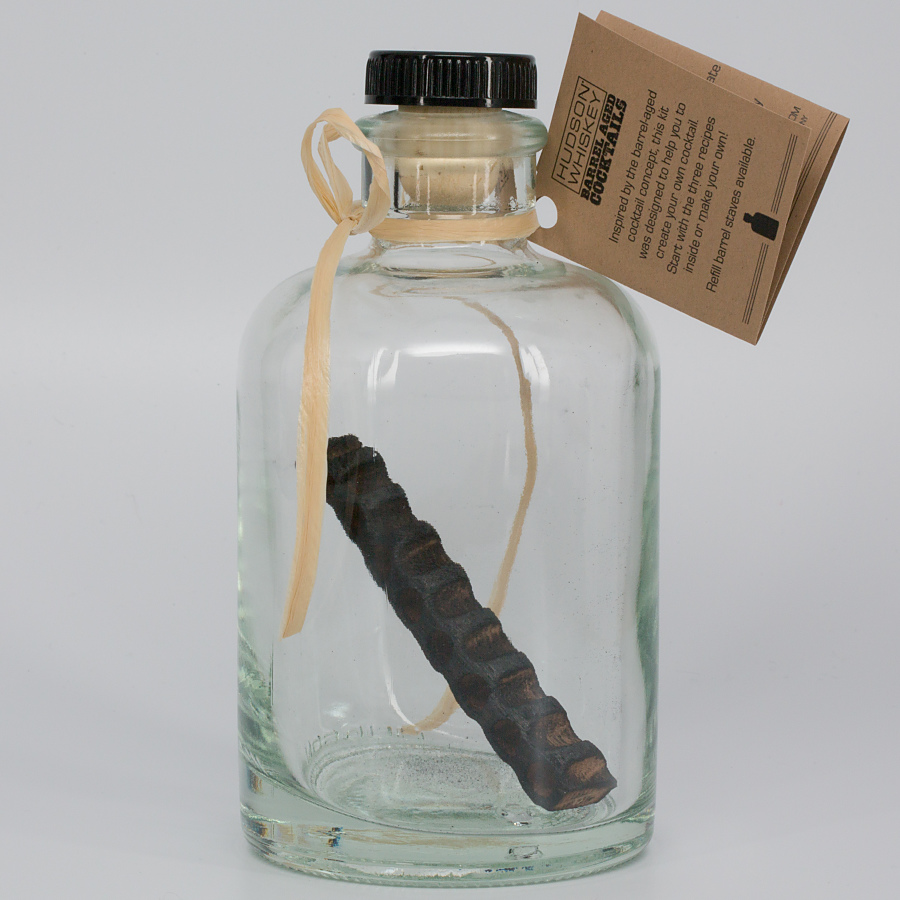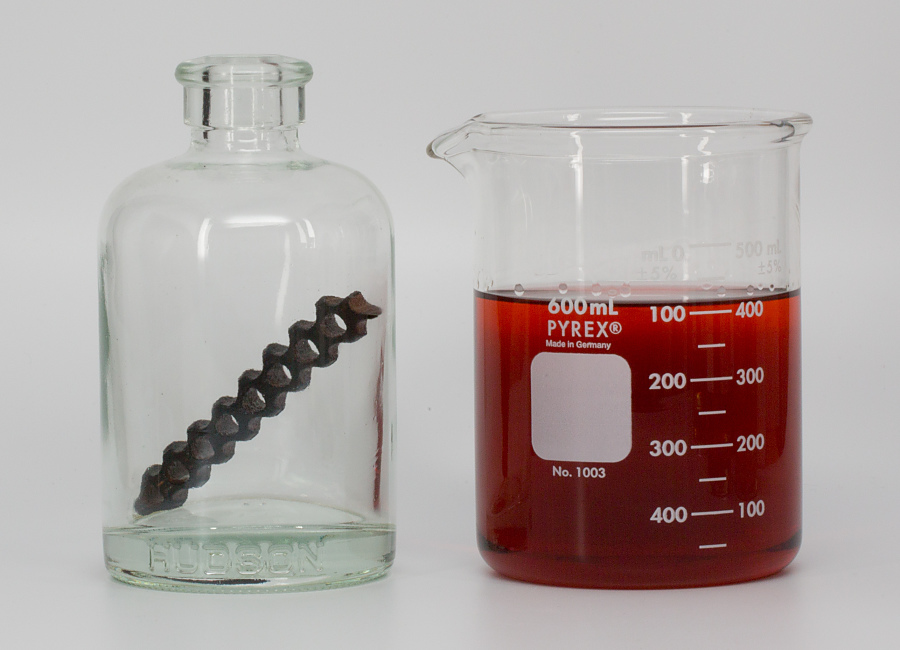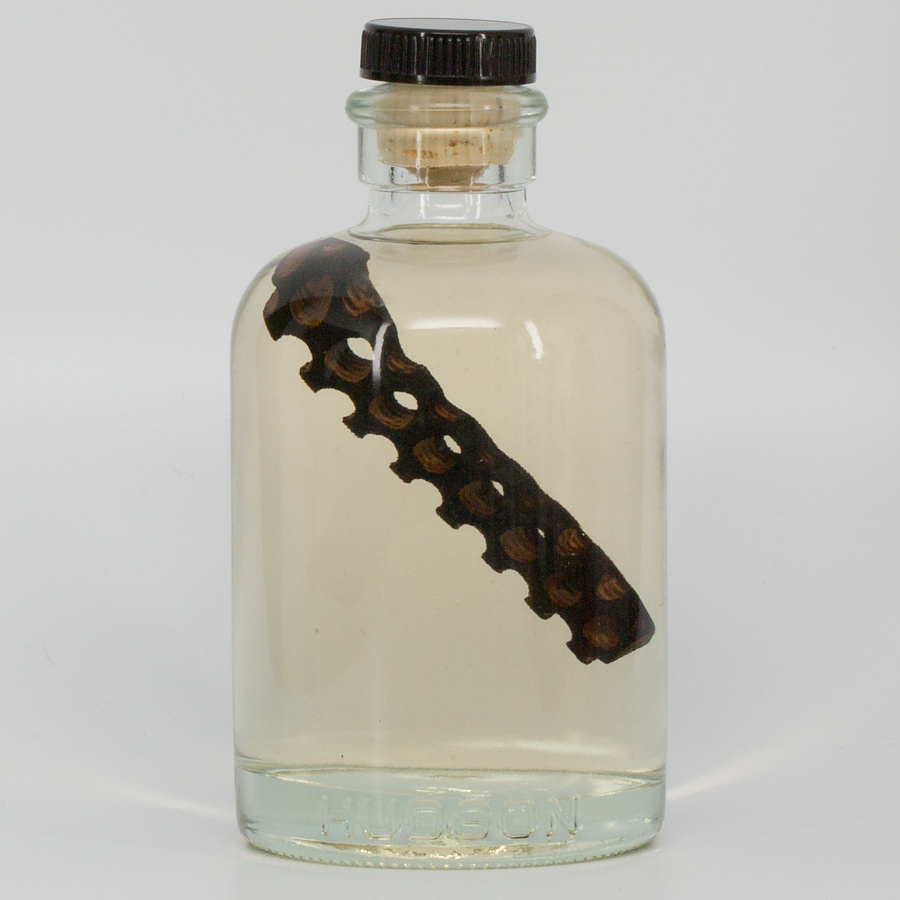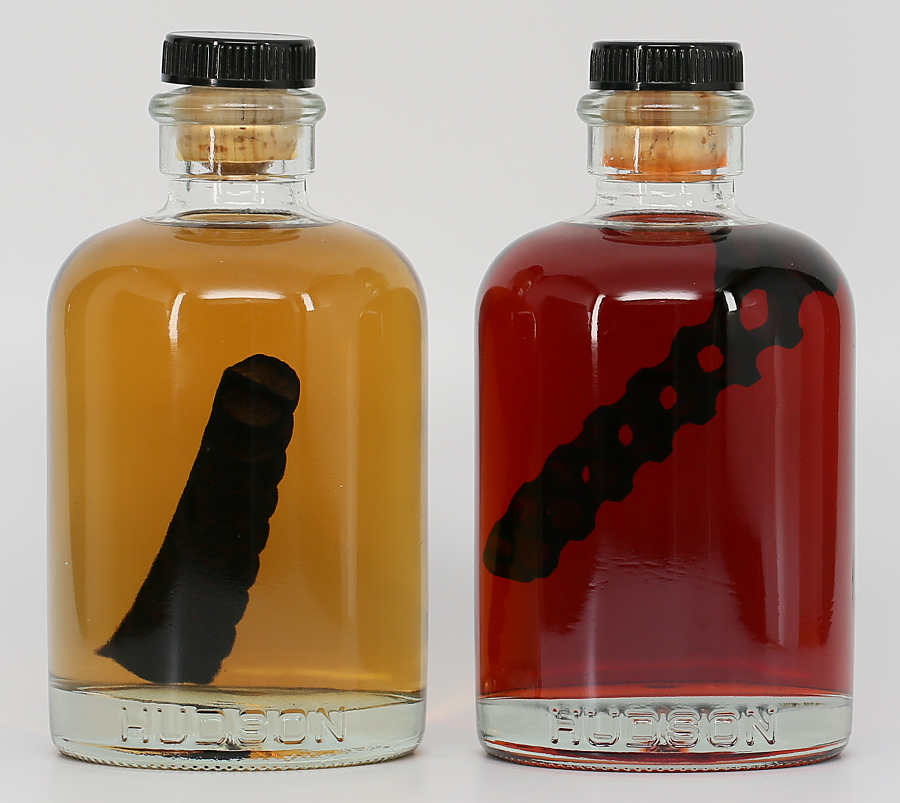A couple of weeks ago, we went to visit Tuthilltown Spirits. They’re based in New York’s Hudson Valley and they distill a bunch of interesting things. Notably they are known for their Hudson Whiskeys, distributed by William Grant & Sons.
One of the interesting aspects of our tour of the distillery was hearing about how the spirits are aged. The basic idea is that they age their whiskeys in smaller barrels for shorter periods and in larger barrels for longer periods. The intimation is that the timing is different, but the effect is the same. I’m not entirely sure I buy that. I don’t believe they do, in earnest, given that they still maintain a significant stock in larger barrels, but perhaps that’s just due to regulations on what needs to be done to call something “bourbon” in the US.
But, that’s not the point of this post. One of the interesting things Tuthilltown sells is a “barrel aged” cocktail kit. The kit gets quotes, since it involves a high surface-area “barrel stave” instead of an actual barrel. For less than $15, one gets a 375 mL vessel and one stave, good for a few rounds of aged cocktails:

I gave the kit a spin with two initial attempts, based on recipes from Tuthilltown. The first was a barrel-aged Negroni (made with their white whiskey rather than gin).

Basically, it’s a Negroni with white whiskey at 2:1:1.

The other bottle received a white Manhattan, with white whiskey, white vermouth, and bitters.

After two weeks, the cocktails picked up a decent amount of color and an abundance of flavor.

Whether or not the result was positive is somewhat more difficult to quantify. I like barrel-aged cocktails in theory. A few specific examples that I’ve had have been rather nice. I’m not sure this approach accurately approximated the result of aging a cocktail in a barrel, be it small or large.
M said of the white Manhattan that it tasted like bananas and wood chips. I did not find the effect unpleasant, but I have a hard time disagreeing. It seemed like a very crude attempt and it tasted of charred wood more than it tasted of aging in a barrel.
The negroni did not fare particularly better.
The effect is a nice introduction to the genre, perhaps, but it’s a bit too blunt. The interesting experiment at this point may be to attempt re-using the same staves for a longer period of time: Now that they’ve had a chance to throw off some of the really raw oak and char flavors, perhaps things will be smoother and more subtle. I’ll let you know.

